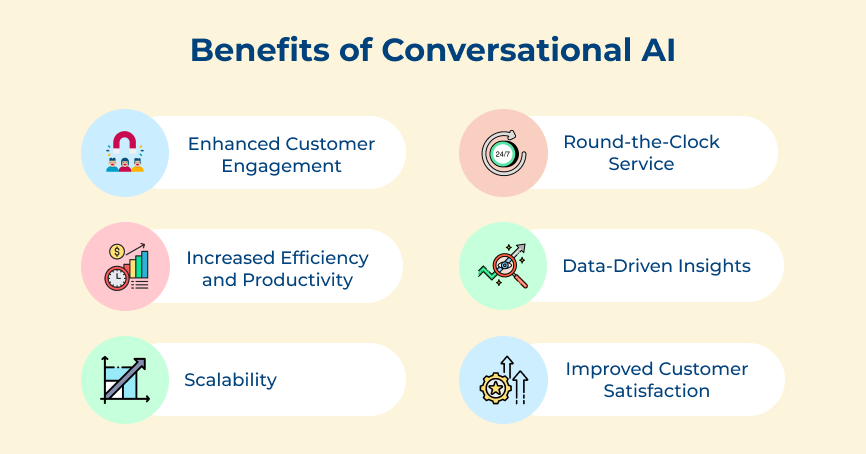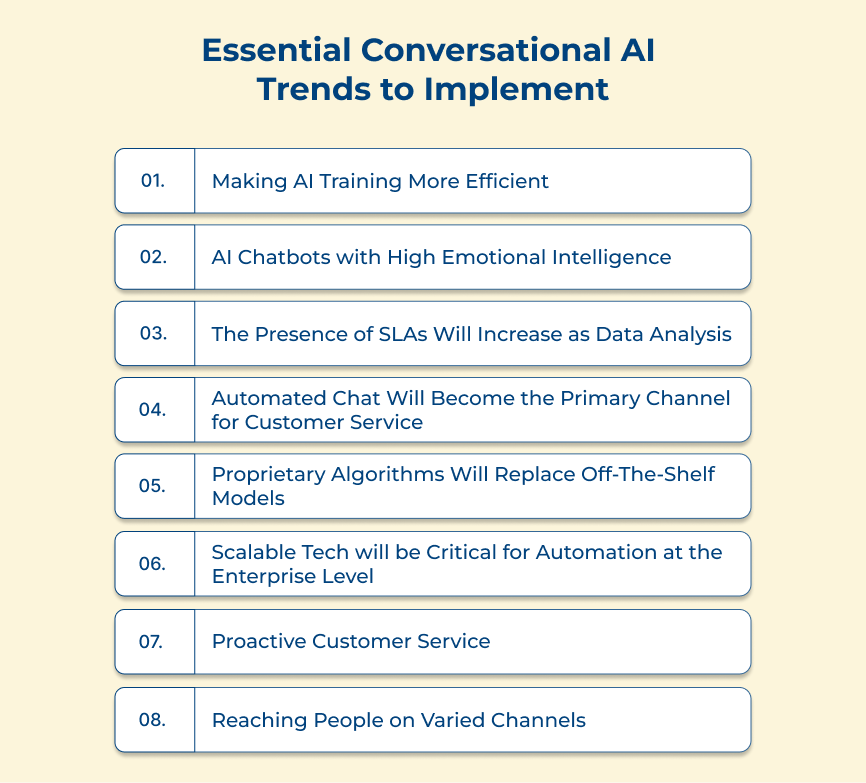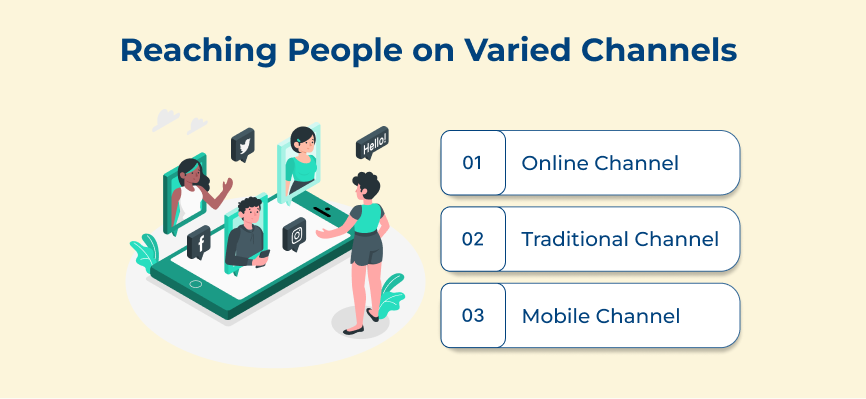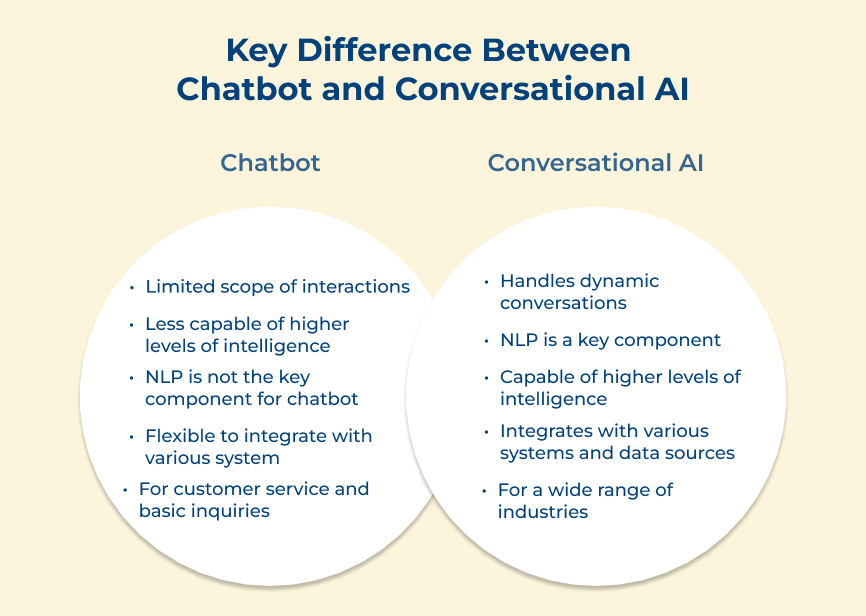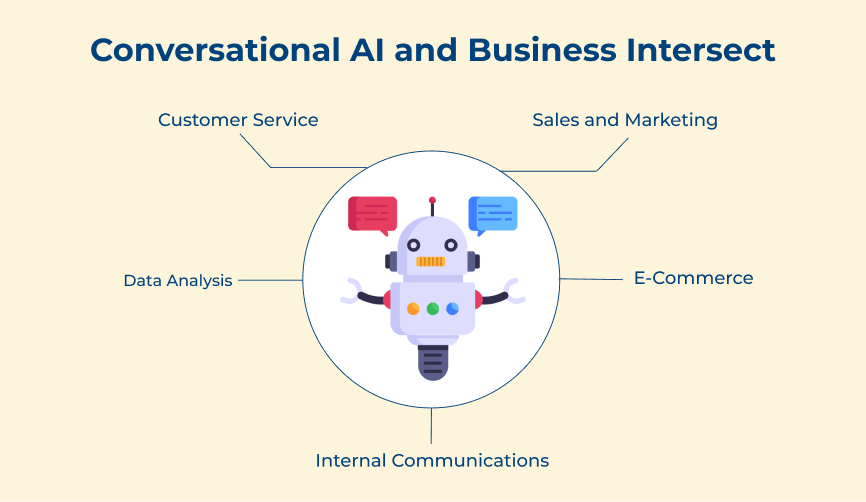1. Making AI Training More Efficient
Making AI training more efficient is an essential conversational trend. The trend focuses on improving the process of training AI models to understand and respond to human conversations more accurately. Efficient AI training is crucial for businesses as it allows them to provide better customer experiences to increase productivity.
Businesses can quickly deploy conversational AI solutions and address customer queries in real time by reducing the time required for training AI models. Let’s consider a customer support chatbot that can simultaneously handle a large volume of customer inquiries. The ability to provide instant responses enables it to save valuable time for both customers and support agents.
Best practices:
- Implement transfer learning techniques: Transfer learning allows AI models to leverage knowledge gained from previous tasks and apply it to new conversations. It significantly reduces the time and resources required for training new models.
- Continuously refine and update AI models: AI models should be regularly reviewed and fine-tuned to adapt to evolving customer needs as well as language patterns. Stay updated with the latest advancements in AI technologies and incorporate them into your training process to ensure optimal performance.
2. AI Chatbots with High Emotional Intelligence
The development of AI chatbots with high emotional intelligence is a particular trend gaining momentum. AI chatbots are designed to respond to human emotions, making them more intelligent and empathetic conversational partners. The trend allows businesses to provide personalized and human-like customer experiences at scale.
Businesses can create meaningful connections with their customers by incorporating emotional intelligence into chatbots. Emotional intelligence leads to increased customer satisfaction and loyalty. For example, let’s consider an e-commerce business that uses AI chatbots. A customer might be feeling frustrated due to an issue with their order. An AI chatbot with high emotional intelligence can detect this frustration and respond sympathetically to help. They offer solutions to resolve the issue to provide a positive customer service experience.
Best practices:
- Customize the chatbot’s personality: The Chatbot’s tone and language should be tailored to align with the brand’s personality. It creates a more consistent and authentic customer experience.
- Provide seamless human handoff: While AI chatbots can handle many customer interactions, it’s important to have a smooth transition to human agents when necessary. Ensure that customers can seamlessly switch to a human representative for more complex or sensitive inquiries.
3. The Presence of SLAs Will Increase as Data Analysis
Service Level Agreements (SLAs) are expected to increase as companies understand the need to measure and optimize their conversational AI systems. SLAs in conversational AI refer to the commitments made between service providers and businesses regarding performance.
Conversational AI trends are extremely useful for businesses as they allow monitoring and evaluation of the effectiveness of their solutions. Companies can enhance customer experiences and ultimately drive business growth by establishing SLAs. Let’s assume that a financial institution implements a conversational AI chatbot. It can set an SLA to measure the accuracy of the responses provided.
Best practices:
- Clearly define SLAs: Establish specific goals and metrics to measure the performance of your conversational AI system. It includes response accuracy, response time and customer satisfaction rates.
- Continuously optimize: Leverage the insights gained from data analysis to improve your conversational AI system on an ongoing basis. Regularly review and update SLAs to reflect evolving customer needs.
4. Automated Chat Will Become the Primary Channel for Customer Service
The increasing use of automated chat as the primary channel for interaction is an emerging trend in customer service. The trend refers to the utilization of conversational AI technologies, such as chatbots, to handle customer queries and provide instant assistance. Automated chat offers numerous benefits for businesses. It ensures 24/7 availability, allowing customers to receive support at any time, even outside traditional business hours.
Automated chat also offers quick responses and reduces waiting time, providing a seamless customer service experience. Let’s consider that the trend is in action with the integration of chatbots on e-commerce websites. These chatbots can answer product-related questions, provide recommendations and even facilitate the purchasing process. They improve customer engagement and drive sales.
Best practices:
- Personalize the chatbot’s responses: to provide a tailored experience for customers. It can involve incorporating their names or previous interactions into the conversation.
- Multi-channel integration: Integrate the chatbot across multiple channels such as websites, social media platforms and messaging apps. It helps in providing seamless support and accessibility to customers wherever they prefer to engage.
5. Proprietary Algorithms Will Replace Off-The-Shelf Models
The use of proprietary algorithms offers businesses greater control and customization over their conversational AI systems. The algorithms are specifically designed to cater to the unique needs and requirements of a business. Businesses benefit from this trend highly as it allows them to stand out in the market by providing a distinct and tailored conversational AI service.
Custom algorithms enable companies to deliver more precise and efficient responses. They can greatly enhance customer satisfaction as well as engagement levels. A travel booking platform that utilizes proprietary algorithms can offer personalized recommendations. They are based on a user’s preferences, past bookings and travel history. The level of customization ultimately increases customer loyalty which drives revenue growth.
Best practices:
- Continuously optimize: Regularly update your proprietary algorithms to ensure they adapt to changing customer needs and preferences. Keep a close eye on emerging technologies and industry trends to stay ahead of the competition.
- Seek expert guidance: If you are new to proprietary algorithms and developing custom conversational AI solutions, consider seeking professional guidance. Collaborate with AI experts or consult experienced service providers to ensure you make the most of the trend.
6. Scalable Tech will be Critical for Automation at the Enterprise Level
Scalable tech refers to the ability of conversational AI technology trends to handle an increasing workload without sacrificing performance. Businesses ensure that their automation systems can handle the demands of a large customer base by using scalable tech. 93% of contact centers consider automation a very important focus. Conversational trend is highly useful for businesses as it allows them to provide a seamless and personalized experience to their customers.
Conversational trends not only improve customer satisfaction but also free up human resources for more complex tasks that require human intervention. A large e-commerce company could handle customer inquiries related to order tracking and returns through a scalable conversational AI system.
Best practices:
- Choose a robust conversational AI platform: Select a platform that offers scalability and can accommodate increasing customer demands without compromising performance.
- Continuously train and update the AI system: Regularly update the system with accurate and up-to-date information to provide accurate responses to improve the overall effectiveness of the automation.
7. Proactive Customer Service
Customer service plays a crucial role in building strong relationships with customers. The traditional reactive approach to customer service is no longer sufficient. That’s where the trend of proactive customer service comes into play and with the help of Conversational AI, it has become an essential aspect of successful businesses.
Conversational trends are incredibly useful for businesses as they help in reducing customer dissatisfaction and churn rates. Businesses can demonstrate their commitment to customer satisfaction and enhance overall customer experience by being proactive. They lead to higher customer retention and loyalty.
Best practices:
- Leverage customer data: Utilize customer data to identify patterns and anticipate customer needs or potential issues.
- Utilize AI-powered chatbots: Implement AI-powered chatbots on your website or social media platforms to interact with customers in real time and provide proactive assistance.
8. Reaching People on Varied Channels
The ability to reach people on varied channels is highly useful for businesses as it allows them to meet customers where they are. It increases the chances of interaction and conversion. Businesses can provide personalized and responsive communication by leveraging conversational AI. They offer a seamless experience for customers.






